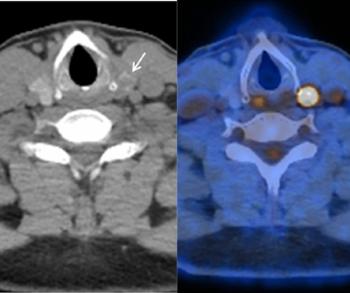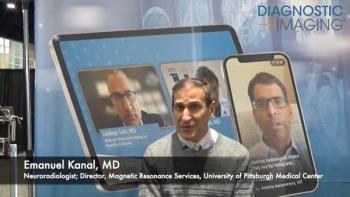
Pediatric CT Dose Lower at Dedicated Children’s Hospitals
Children who underwent CT scans to evaluate for appendicitis at a dedicated children’s hospital were exposed to far less radiation.
Children who underwent CT scans to evaluate for appendicitis at a dedicated children’s hospital were exposed to 85 percent less radiation compared to levels when scanned at facilities that primarily treated adults.
“Non-dedicated pediatrics facilities should be urged to update their CT standards appropriately or refer to children’s hospitals to minimize radiation exposure,” according to Nicole E. Sharp, MD, of Children’s Mercy Hospital, Kansas City, Mo., and colleagues who presented the
There is currently a lot of research being conducted to examine methods of reducing radiation dose while maintaining image quality. However, children may sometimes be exposed to excess radiation when CT scanner parameters are not adjusted appropriately for their size.
Sharp and colleagues conducted a chart review of children transferred to Children’s Mercy Hospital after undergoing a CT scan for appendicitis at a non-dedicated pediatric facility. Between January 2011 and November 2012, they reviewed data from 263 children taken from 42 outside non-dedicated facilities. One hundred patients had to be excluded because CT dose was not reported
The researchers matched these 163 children with children with appendicitis who underwent CT at their facility and compared the amount of radiation exposure.
Patients from outside facilities had a longer dose length product compared to children examined at the dedicated facility (619.53 mGy cm vs. 253.78 mGy cm; P<.001). Diagnostic outcome as measured by pathology positive for appendicitis was also significantly different (81 percent at outside facilities vs. 95 percent; P=.026). However, the diagnostic outcome of the CT scan was not significantly different between the outside facility and the pediatric facility.
The researchers also conducted a subgroup analysis after the introduction of the CT dose-length index. This analysis included 65 patients in each group and found significant reduction in dose-length product (143.54 mGy cm vs. 586.25 mGy cm; P<.001), CT dose-length (4.89 mGy vs. 16.98 mGy; P<.001), and size-specific dose estimate (3.81 mGy vs. 26.71 mGy; P<.001).
Newsletter
Stay at the forefront of radiology with the Diagnostic Imaging newsletter, delivering the latest news, clinical insights, and imaging advancements for today’s radiologists.




























